I’ve just begun reading Jill Lepore’s new book about Wonder Woman and William Moulton Marston. So far, I’m finding it to be really thorough and excellent! [Edit: My final assessment was much more mixed.] I was a little disturbed, though, to discover that on the first page of the preface, Lepore makes a basic mistake about one of the key features of the early Wonder Woman comics:
“She had a magic lasso; anyone she roped had to tell the truth”(xi).
She repeats the point in one of the color plates in the middle of the book, which does show Wonder Woman compelling a thug to tell the truth. The accompanying text that connects this work to lie detectors and Marston’s work on deception is ultimately misleading, however.
What’s the problem here? Isn’t it called “the Lasso of Truth?” The problem, as Brian Cronin pointed out a couple of years ago at Comic Book Resources, is that this is actually anachronistic. Marston called this iconic element of Wonder Woman’s gear the “Magic Lasso” or sometimes “Golden Lasso,” not the lasso of truth. And its power has nothing specific to do with the truth, but rather with compelling obedience.
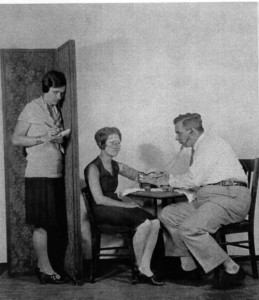 It’s a tempting connection to make Marston, after all, invented the lie detector test, or at least, he’s one of its most recognizable developers and proponents. It’s a common and tempting connection to draw:
It’s a tempting connection to make Marston, after all, invented the lie detector test, or at least, he’s one of its most recognizable developers and proponents. It’s a common and tempting connection to draw:
Here’s Geoffrey Bunn, one of the few historians of psychology to write in detail about Marston:
“Anyone caught in the lasso found it impossible to lie. And because Wonder Woman used it to extract confessions and compel obedience, the golden lasso was of course nothing less than a lie detector.” (Bunn 1997, p. 108)
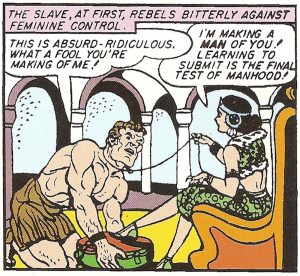 The real story behind Wonder Woman’s magic lasso is much more interesting and much stranger. Marston was an experimental psychologist who developed a theory of emotions. According to his theory, the four basic emotions were Dominance, Compliance, Inducement, and Submission. According to Marston, submission was a matter of giving over one’s will to a basically friendly stimulus; not only was it necessarily a pleasant emotion, but it was a necessary component of love and thus of a healthy psyche. What the magic lasso was able to do, it seems, was to place the person bound in an automatic state of submission to the will of the lasso’s wielder, making them happy to do whatever you asked. Including, occasionally, to tell the truth when they intended to deceive.
The real story behind Wonder Woman’s magic lasso is much more interesting and much stranger. Marston was an experimental psychologist who developed a theory of emotions. According to his theory, the four basic emotions were Dominance, Compliance, Inducement, and Submission. According to Marston, submission was a matter of giving over one’s will to a basically friendly stimulus; not only was it necessarily a pleasant emotion, but it was a necessary component of love and thus of a healthy psyche. What the magic lasso was able to do, it seems, was to place the person bound in an automatic state of submission to the will of the lasso’s wielder, making them happy to do whatever you asked. Including, occasionally, to tell the truth when they intended to deceive. 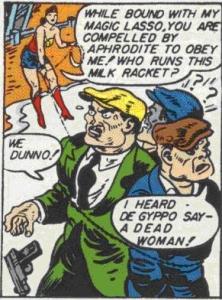
However, more often than not, when Wonder Woman wanted to know whether someone was telling the truth, she’d make use of the very tool that Marston invented for that purpose, a lie detector test based on systolic blood pressure measurements.
Above I called the mistake an anachronism, because while Marston never used the term “Lasso of Truth,” present day comics do refer to it by that name. According to Cronin, this usage began in Wonder Woman volume 2 #2 (1987; Writer: Greg Potter, Artist: George Pérez, Editor: Karen Berger). This is the post-Crisis reboot of Wonder Woman, meaning that it occurred after the Crisis on Infinite Earths mini-series that altered the continuity of the DC Comics universe. Presumably, the creators knew about Marston’s interests in lie detection, and decided to change the powers and name of the lasso accordingly. (On the other hand, the commenters on Cronin’s piece suggests that the usage comes from the Wonder Woman TV show starring Linda Carter, so perhaps the connection was made by the creators of the show.)
UPDATE: Noah Berlatsky gets it right in his new book, Wonder Woman: Bondage and Feminism in the Marston/Peter Comics, 1941-1948.
Besides her superstrength, superspeed, superendurance, and other physical prowess, [Wonder Woman] also has bracelets that she can use to block bullets, an invisible plane, and a magic lasso that compels obedience to her commands (in later iterations, the lasso’s power is often downgraded so that it forces people to tell the truth rather than forcing them to obey any command).

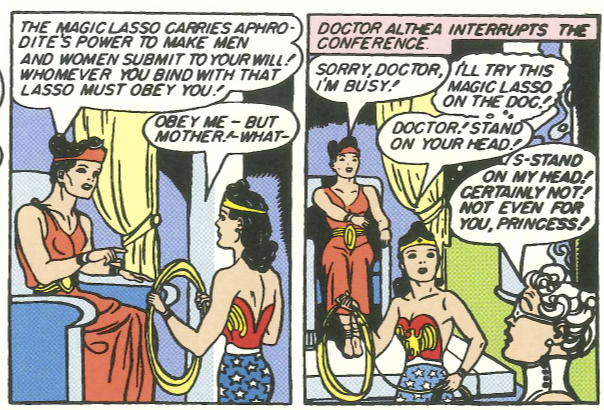
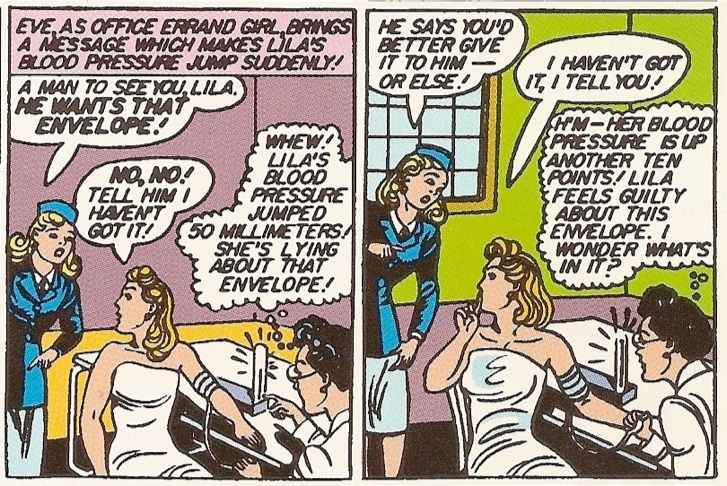
Well,you’re under stating the contributions to the TRUTH about the lasso being an obedience tool rather than a truth one. It has a lot to do with emotions, yes. Puts people in a state of submission. But you fail to mention HOW, the emotion mechanism, at which Ego plays a large role. You can learn this from one of the Marstonian scholars out there…and I don’t mean Jill Lepore. All their works are free on the internet.
Plus, youre OVER stating Noah Berlatsky’s contribution to this truth. Noah is an amateur at Marstonian dealings, yet he makes comments on the sexual element in Wonder Woman that are way off and distorted, lacking true academic research.